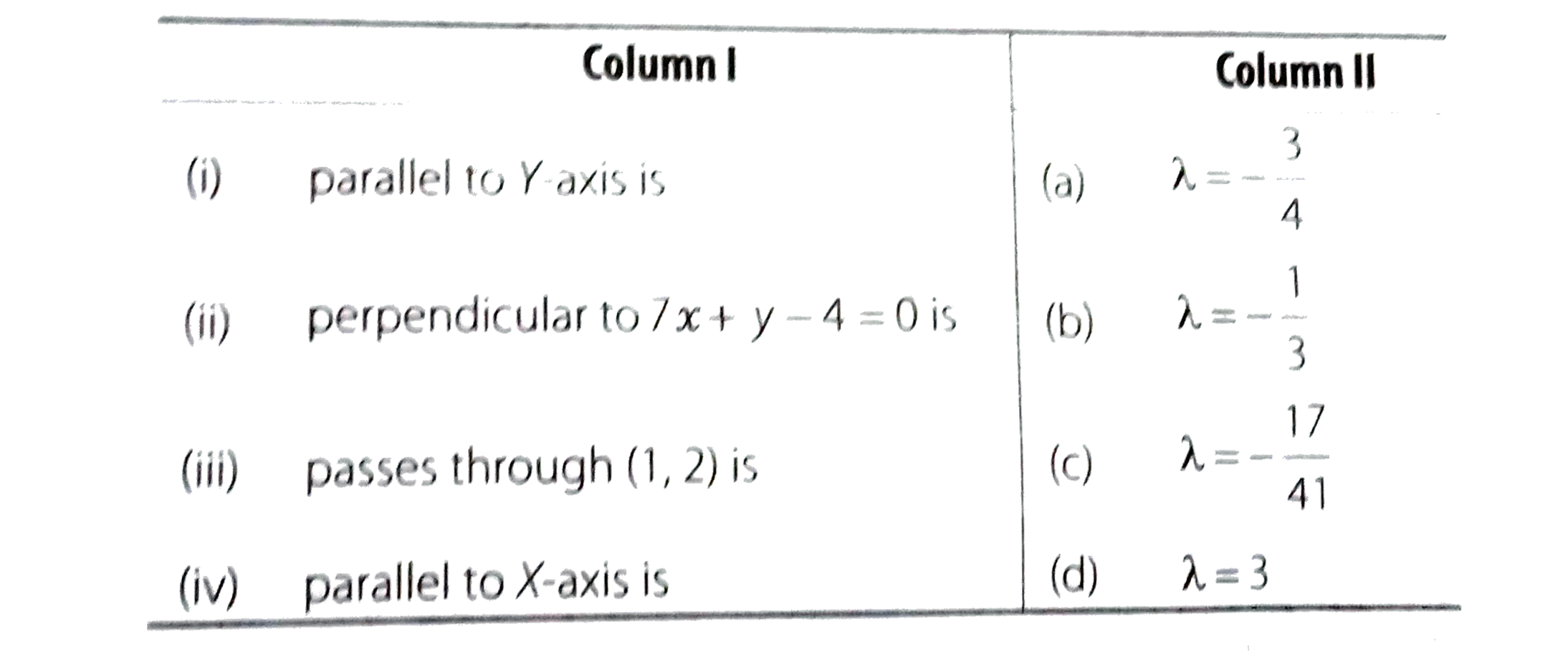Let A=⎡⎢⎣x+λxxxx+λxxxx+λ⎤⎥⎦then prove that A−1 exists if 3x+λ≠0,λ=≠0
To prove that the inverse of the matrix A exists under the conditions 3x+λ≠0 and λ≠0, we need to show that the determinant of A is non-zero.
1. Define the Matrix A:
A=⎛⎜⎝x+λxxxx+λxxxx+λ⎞⎟⎠
2. Calculate the Determinant of A:
We will use the determinant formula for a 3×3 matrix:
det(A)=a(ei−fh)−b(di−fg)+c(dh−eg)
where A=⎛⎜⎝abcdefghi⎞⎟⎠.
For our matrix A:
- a=x+λ, b=x, c=x
- d=x, e=x+λ, f=x
- g=x, h=x, i=x+λ
The determinant can be calculated as follows:
det(A)=(x+λ)((x+λ)(x+λ)−x2)−x(x(x+λ)−x2)+x(x2−x(x))
3. Simplify the Determinant:
- First, calculate (x+λ)(x+λ)−x2:
(x+λ)2−x2=x2+2xλ+λ2−x2=2xλ+λ2
- Now substitute back into the determinant:
det(A)=(x+λ)(2xλ+λ2)−x(xλ)+x(0)
- This simplifies to:
det(A)=(x+λ)(2xλ+λ2)−x2λ
4. Factor Out Common Terms:
- Notice that we can factor out λ:
det(A)=λ((x+λ)(2x+λ)−x2)
5. Final Expression:
- The final expression for the determinant is:
det(A)=λ(2x2+3xλ+λ2)
6. Conditions for Inverse:
- For A−1 to exist, we need det(A)≠0:
λ(2x2+3xλ+λ2)≠0
- This leads to the conditions:
- λ≠0
- 2x2+3xλ+λ2≠0
- The polynomial 2x2+3xλ+λ2 is a quadratic in x. For it to not equal zero, we need to ensure that its discriminant is less than zero or that it does not have real roots.
7. Conclusion:
- Therefore, if 3x+λ≠0 and λ≠0, then det(A)≠0, and hence A−1 exists.
A=⎛⎜⎝x+λxxxx+λxxxx+λ⎞⎟⎠
We will use the determinant formula for a 3×3 matrix:
det(A)=a(ei−fh)−b(di−fg)+c(dh−eg)
where A=⎛⎜⎝abcdefghi⎞⎟⎠.
- a=x+λ, b=x, c=x
- d=x, e=x+λ, f=x
- g=x, h=x, i=x+λ
det(A)=(x+λ)((x+λ)(x+λ)−x2)−x(x(x+λ)−x2)+x(x2−x(x))
- First, calculate (x+λ)(x+λ)−x2:
(x+λ)2−x2=x2+2xλ+λ2−x2=2xλ+λ2
- Now substitute back into the determinant:
det(A)=(x+λ)(2xλ+λ2)−x(xλ)+x(0)
- This simplifies to:
det(A)=(x+λ)(2xλ+λ2)−x2λ
- Notice that we can factor out λ:
det(A)=λ((x+λ)(2x+λ)−x2)
- The final expression for the determinant is:
det(A)=λ(2x2+3xλ+λ2)
- For A−1 to exist, we need det(A)≠0:
λ(2x2+3xλ+λ2)≠0
- This leads to the conditions:
- λ≠0
- 2x2+3xλ+λ2≠0
- Therefore, if 3x+λ≠0 and λ≠0, then det(A)≠0, and hence A−1 exists.
Topper's Solved these Questions
- MATRICES & DETERMINANTBOOK - RESONANCE ENGLISHCHAPTER - MATRICES & DETERMINANTEXERCISE - PART-II:
28 Videos
- INDEFINITE INTEGRATION BOOK - RESONANCE ENGLISHCHAPTER - INDEFINITE INTEGRATION EXERCISE - SELF PRACTIC PROBLEMS
25 Videos
- NUMBER THEORYBOOK - RESONANCE ENGLISHCHAPTER - NUMBER THEORYEXERCISE - Exercise -2 (PART - II)
4 Videos
Similar Questions
Let f(x)=λ+μ|x|+ν|x|2, where λ,μ,ν∈R, then f'(0) exists if
View SolutionThe values of λ for which the function f(x)=λx3−2λx2+(λ+1)x+3λ is increasing through out number line (a)λ∈(−3,3) (b) λ∈(−3,0) (c)λ∈(0,3) (d) λ∈(1,3)
View SolutionLet f(x)=x4−λx3−3x2+3λxx−λ. If range of f(x) is the set of entire real numbers, the true set in which λ lies is
View SolutionIf (λ2+λ−2)x2+(λ+2)x<1 for all x∈R , then λ belongs to the interval :
View SolutionIf A satisfies the equation x3−5x2+4x+λ=0 , then A−1 exists if (a)λ≠1 (b) λ≠2 (c) λ≠−1 (d) λ≠0
View SolutionIf the equation 4x2−x−1=0and3x2+(λ+μ)x+λ−μ=0 have a root common, then the irrational values of λandμ are (a) λ=−34 b. λ=0 c. μ=34 b.μ=0
View SolutionLet αandβ be the values of x obtained form the equation λ2(x2−x)+2λx+3=0andifλ1,λ2 be the two values of λ for which αandβ are connected by the relation αβ+βα=43 . then find the value of λ21λ2+λ22λ1andλ21λ22+λ22λ21
View SolutionIf the two roots of the equation (λ−2)(x2+x+1)2−(λ+2)(x4+x2+1) are real and equal for λ=λ1,λ2 then λ1+λ2=0 (b) |λ1−λ2|=6 (c) λ1+λ2=32 (d) all of these
View SolutionPortion of asymptote of hyperbola x2a2−y2b2=1 (between centre and the tangent at vertex) in the first quadrant is cut by the line y+λ(x−a)=0 (lambda is a parameter) then (A) λ∈R (B) λ∈(0,∞) (C) λ∈(−∞,0) (D) λ∈R−{0}
View SolutionThe value of the λ if the lines (2x+3y+4)+λ(6x−y+12)=0 are

View Solution
